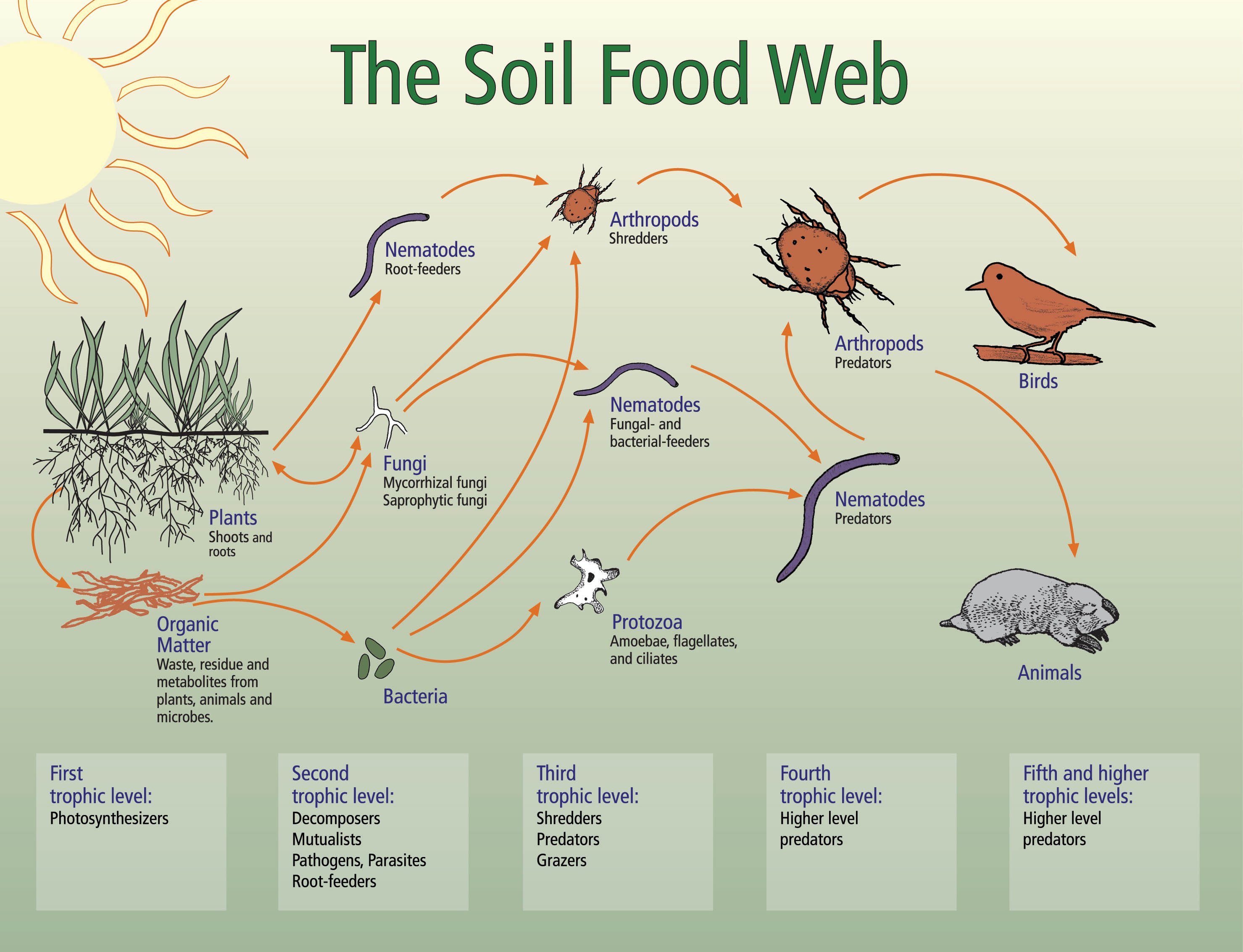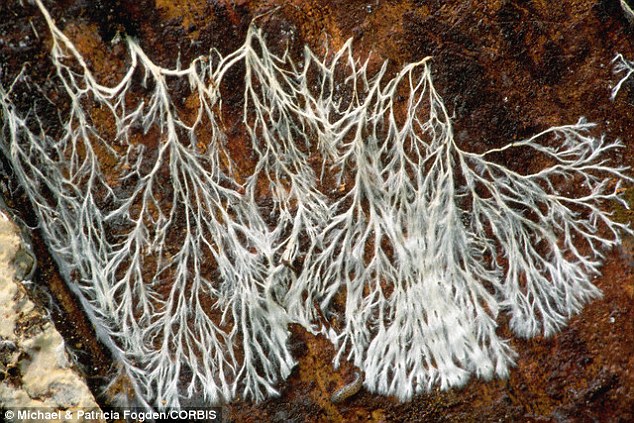

Calling soil dirt is akin to calling the ocean water. Yes there is water in the ocean, but the complexity of the environment goes way beyond such a simplistic definition. Dirt is rocks of differing sizes. By adding organic matter and varying life forms, you now have soil. Dirt is inert; soil is alive. The most important lesson is that plants don’t get their nutrients from compost. Instead, there is a wide range of microbes that first must digest the organic matter into a form that plants can absorb. You must feed those microbes to grow healthy plants, and compost is the best food.

Bacteria are the most microscopic life form in soil. A teaspoon of productive soil generally contains between 100 million and 1 billion bacteria. As you’ll see, the more the bacteria in your soil, the healthier it is. Under proper conditions, bacteria populations can double every 20 minutes. Their food source is dead organic matter from plants, manures, or animals. Bacteria decomposing activities are the front line for nutrients that plants need. We know that nitrogen is one of the most important nutrients plants need to grow. A quick trip to your local nursery's fertilizer aisle and you’ll see dozens of bags of fertilizers touting the amount of nitrogen they possess. Nature has its own fertilizer company. Of course that’s bacteria! In the process of their life cycle, they take nitrogen from the air which plants can’t absorb and convert it into a form that plants can absorb. The plant then uses these nitrogen compounds from bacteria to produce proteins they need. Another advantage of bacteria is that they secrete a glue which binds the very smallest clay particles into clumps, and in the process create larger voids that greatly improve water holding capacity.

On the same microscopic level are fungi. These microscopic cells along with bacteria, fungi are important as decomposers in the soil food web. They convert hard-to-digest organic material into forms that other organisms can use. Fungi grow long strands call hyphae that are very narrow (only several thousandths of an inch), but can be several yards long. These hyphae push their way between soil particles, roots, and rocks. Within the hyphae, fungi are actually capable of moving water and nutrients to where they are needed. Thus water can be "transported" from wet areas to dry areas. Plants and fungi make a deal. The plants secretes a form of sugar called an exudate into the soil to provide food for the fungi. And in exchange the fungi bring water and nutrients back to the plant. In some plants, 25% of all photosynthesis is devoted to feeding the fungi. As a side note, if you see mushrooms in your garden, that's a good thing. Mushrooms are the fruiting stage of the life cycle of fungi; that's a good sign that the soil is healthy.

Now we move up a higher level on the food web which include protozoa and nematodes. These organisms consume bacteria and fungi, and in the process excrete nitrogen and other nutrients in a form that plants can uptake.

Pill bugs, millipedes, and other similar arthropods play an important role as well. They play a vital role of shredding (that’s lunch for them) larger size organic matter into smaller pieces that bacteria and fungi can consume easier. They also stir up the soil as they move about, helping to mix up bacteria and organic matter.

Earthworms dramatically alter soil structure, water movement, nutrient dynamics, and plant growth. In the process of consuming bacteria and fungi, earthworms concentrate nutrients that plants require. They also mix up soils layers as they move; collecting organic matter on the surface and then depositing it deeper within the soil. The burrows that earthworms create provide access for water and air to reach deep into the soil layers where bacteria and fungi live. These burrows also provide a channel for roots to grow in. The excreta of worms known as castings are left in the burrows are an excellent plant food waiting for roots to discover.
If you’ve made it this far, hopefully you'll see that bacteria and fungi are basis of the soil food web. And to encourage the growth of these microbes, you need to feed them organic matter. That is exactly what compost is. It is the ultimate building block of healthy soils, which then fosters healthy plants. It’s as simple as that! To learn even more, here is an excellent link for understanding soils in an (sub)urban environment NRCS Urban Soil Primer. Read through this one and you’re well on your way to being a master.